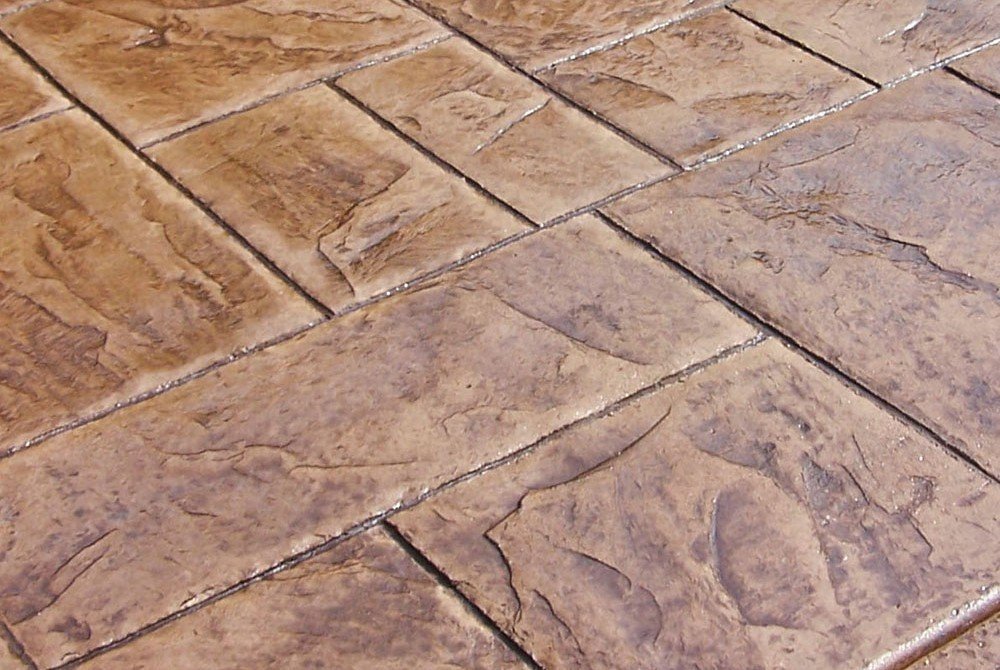When considering outdoor flooring options, many homeowners find themselves weighing the benefits of concrete stamps against traditional pavers. Concrete stamps are a versatile choice that can mimic natural materials like stone, brick, or tile, providing an attractive look without the added cost and labor of real stone installation. This method involves pouring concrete and then using stamps to imprint designs, resulting in stunning surfaces that can enhance patios, walkways, and driveways.
In the Concrete Stamps vs Pavers debate, one of the standout advantages of stamped concrete is its seamless appearance. Unlike pavers, which have joints that can collect weeds and dirt, stamped concrete creates a smooth and continuous surface. This not only makes maintenance easier but also gives your outdoor space a cohesive and polished look. Homeowners appreciate this benefit, especially in high-traffic areas where durability and ease of cleaning are essential.
Another significant factor to consider is cost. Stamped concrete is typically less expensive than installing pavers, which require the purchase of individual stones and more intricate setup. With concrete stamps, you pay for the concrete fundamentally, and the design can be added at a fraction of the price of laying down pavers. This can make stamped concrete an appealing choice for those looking to achieve a high-end aesthetic without breaking the bank.
However, it’s essential to think about the potential downsides in the Concrete Stamps vs Pavers discussion as well. While stamped concrete is beautiful, it can be prone to cracking over time, especially if not properly sealed or maintained. On the other hand, pavers, while potentially more expensive, offer the advantage of being easily replaced if damaged. Understanding these distinctions will help homeowners make an informed decision when contemplating their outdoor flooring needs.
Advantages of Concrete Stamps
Concrete stamps offer a variety of advantages that make them a popular choice for homeowners and builders looking for an attractive and durable surface. One of the key benefits is their versatility. With numerous patterns and colors available, concrete stamps can mimic the look of natural stone, brick, or even wood, allowing you to achieve a beautiful surface without the high costs associated with those materials. This adaptability ensures that you can find a design that perfectly fits your aesthetic preferences.
Another significant advantage of concrete stamps is their low maintenance requirements. Unlike traditional pavers that may require frequent repairs or replacements due to shifting or cracking, stamped concrete surfaces are designed to withstand the elements and hold their shape over time. Routine maintenance typically involves simple cleaning and occasional sealing, making concrete stamps a more convenient option for busy homeowners.
Durability is another strong point when considering the debate of Concrete Stamps vs Pavers. Stamped concrete is known for its strength and long-lasting nature, able to withstand heavy foot traffic and even vehicular loads in some cases. This quality makes it an excellent choice for patios, driveways, and walkways, ensuring you get the best return on your investment.
Finally, concrete stamps are often quicker and easier to install compared to pavers. The process involves pouring and stamping fresh concrete, which can typically be completed in a shorter time frame than laying individual pavers. This efficiency not only saves time but can also reduce labor costs, making concrete stamps an enticing option for those looking to enhance their outdoor spaces without a lengthy installation process.
Understanding Pavers Benefits
When considering outdoor surfaces for your patio or walkway, you might come across two popular choices: concrete stamps and pavers. Understanding the benefits of pavers is essential when making a decision in the Concrete Stamps vs Pavers debate. Pavers are versatile, durable, and aesthetically pleasing, making them an excellent option for various landscaping needs.
One of the primary benefits of pavers is their durability. Made from concrete, brick, or stone, pavers are designed to withstand heavy foot traffic and harsh weather conditions. Unlike poured concrete, which can crack over time, pavers can shift slightly without losing their structural integrity. This feature makes them an ideal choice for areas that experience freeze-thaw cycles, ensuring that your outdoor spaces remain attractive for years to come.
Aesthetic appeal is another significant advantage of pavers. Available in various colors, shapes, and sizes, pavers offer endless design possibilities to suit your personal style and landscape theme. Whether you prefer a classic look with brick pavers or a modern flair with colorful concrete options, pavers can enhance the visual appeal of your outdoor area. This versatility sets them apart from concrete stamps, which may offer limited design choices.
Additionally, maintenance and repair of pavers are quite manageable. If a paver becomes stained or damaged, you can easily remove it and replace it without having to repour an entire slab of concrete. This ease of maintenance contributes to the long-term value of choosing pavers over other materials, making them a smart investment for homeowners. In the ongoing discussion of Concrete Stamps vs Pavers, pavers clearly demonstrate significant advantages that are worth considering.
Making the Right Choice
On the other hand, pavers offer their own set of benefits. They are typically more durable and can withstand extreme weather conditions better than stamped concrete. Pavers allow for easy repairs; if one gets damaged, it can simply be replaced without affecting the surrounding ones. This flexibility can be a significant advantage for homeowners seeking a long-lasting solution.
Ultimately, your decision between concrete stamps vs pavers should be influenced by your specific needs, whether aesthetic, functional, or budgetary. Consider how much traffic your outdoor area will experience and how often you want to maintain it. Understanding these factors will guide you to the best choice for your space, ensuring your hardscaping investment lasts for years to come.
